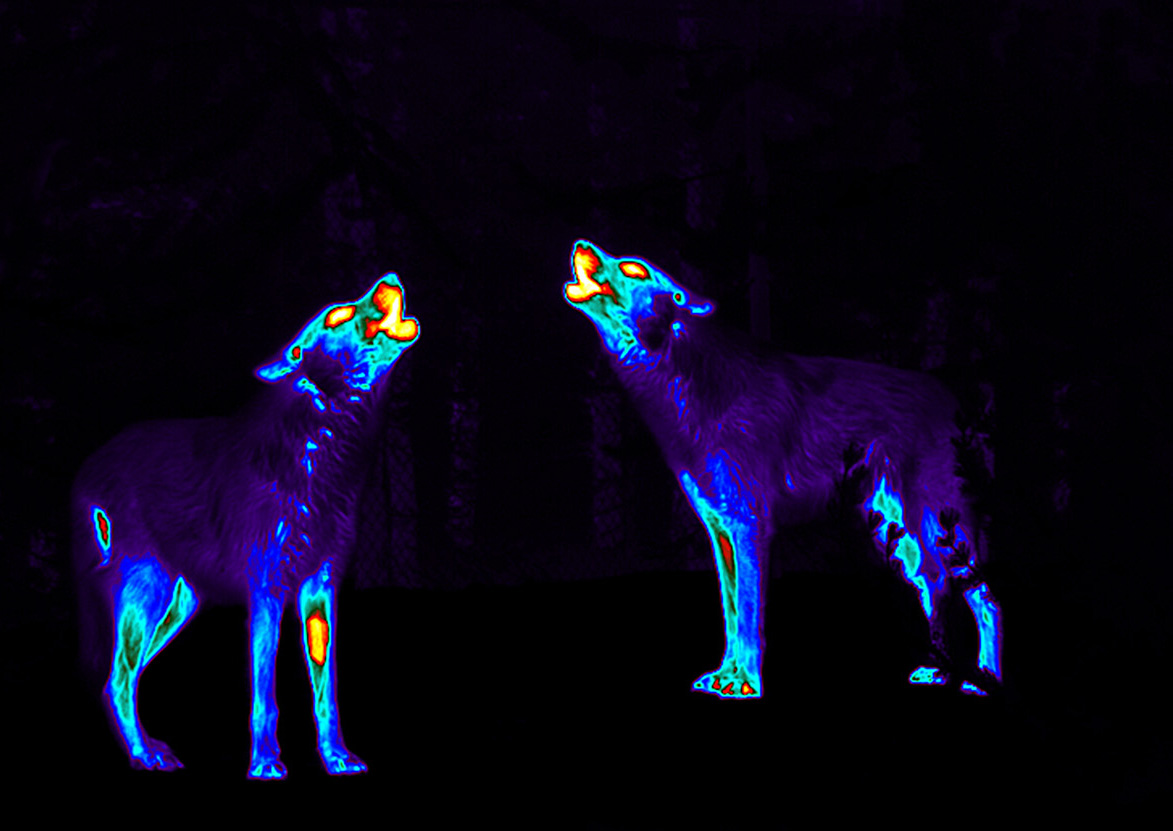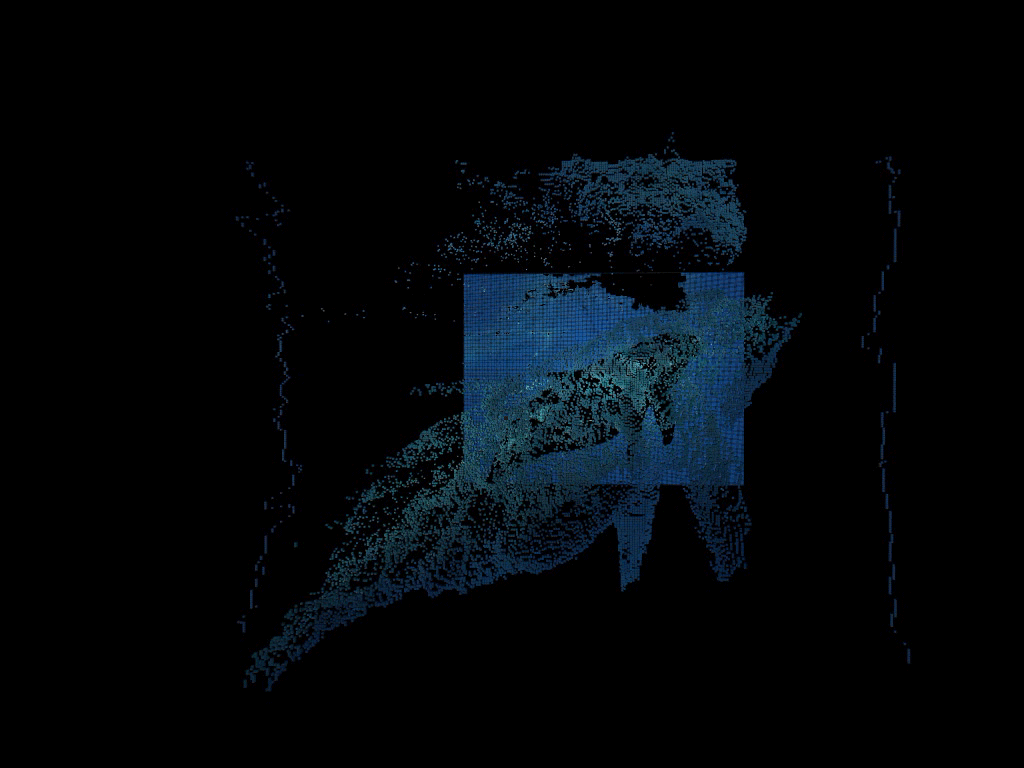----------
A sound project initiated by L. M. Ramsey and Kalas Liebfried in 2023. The project employs data found in open-access archives and their interpretation through doom, drone and ambient compositions.
1. NOT A WOLF

Performed live May 2023, for the release of Positionen Issue #135 at Lothringer 13 Halle. A Non-profit Space for Contemporary Art.
Ramsey began the construction of this work by collecting various recordings of howls, barks and growls of the gray wolf. She then analyzed the phonemes in the recordings to identify the specific frequencies, durations, and patterns of the different wolf vocalizations. These phonemes are then mapped to the phonetic units of human speech. She further compared the phonemes to her own to refine prosody. The synthetic voices are placed in the backdrop of the sampled wolf sounds and are responded to by the droning howl of Liebfried’s guitar.
2. JUNK ANIMA

INTERACTIVE VERSION: www.sonicextinction.net/v2/dawn-phase
Junk Anima is a sample-based synthetic sound work illustrating the unique sonic experience of whales and its invisibilization by humans in Antarctic waters.
The ‘junk’ of a whale is the structure found in the forehead, originally labelled this way by whalers who dismissed this portion of the whale as worthless. This so-called ‘junk’ is a key organ that is involved in communication, echolocation, and their experience of this world. The International Association of Antarctica Tour Operators (IAATO) estimates that in 2023, over 100,000 tourists will visit Antarctica, a 40% increase from pre-pandemic years. While hunting and whaling has a visible effect on populations, tourism and other human activities often have invisible ones. Samples of hydrophone recordings found in several online databases dedicated to ship noise, have been synthesised to simulate this barrage of sound produced by the increase in human traffic. The samples are combined with an archival narration from a 1940s instructional documentary on whaling, our own instrumental stylings, and layered over a hydrophone recording of ambient Antarctic waters. This work reminds us how often humans have labelled the anima of a non-human as junk, and shifts the ear towards our collective impact on these individuals and the continued human-centred narrative.
3. HYPERACID
Commissioned by RADIO AMNION: SONIC TRANSMISSIONS OF CARE IN OCEANIC SPACE a multi-year sound art project for the waters of Earth, commissioning and relaying new compositions by contemporary artists more than 2kms deep with/in the Pacific Ocean. During each full moon, far beyond human perception, the abyssal waters of Cascadia Basin resonate with the deep frequencies and voices of invited artists. All transmissions are relayed in the sea through a submerged neutrino telescope experiment’s calibration system and available here online only during the three days of each full moon.
The combined sounds are linear, with the recordings from the 1940s playing for the first minute, followed by the 1950s, and so on, until we reach the year 2000 at the six minute mark. These generational vocalisations are united to the backdrop of an orchestra tuning their instruments, until they are existing as many individuals not separated by time, but all at once, in tune.
Since the beginning of the industrial revolution, the concentration of carbon dioxide has risen significantly, causing a shift in the pH of the ocean, resulting in acidification. This shift has had an impact on many living organisms. Shell builders like oysters and corals for example, have had a hard time finding enough carbonate ions to maintain their calcium based structures. Recent scientific conversation amongst humans has hypothesised that ocean acidification has impacted how sound propagates through the water. The amplification of some sounds and the silencing of others may result in a significant human led shift away from the natural evolution of the cultural languages and sonifications of these individuals, placing them out of tune with one another.
This was our call to action, to assemble this historical data, and to share these songs with the only ones left able to listen. This work is for the whales.
--------------------------------------------------------------------------------